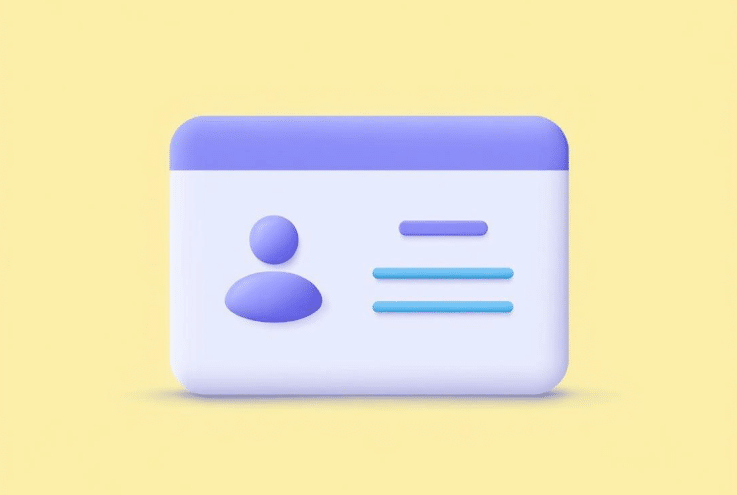Delivering fast, personalized, and consistent customer service is no longer optional—it’s expected. That’s why more businesses are turning to call center CRM integration to unify customer data, streamline workflows, and improve both agent efficiency and customer satisfaction.
Modern customer support goes far beyond handling phone calls. Today’s contact center CRM software connects voice, email, chat, messaging apps, and even social media—creating a single source of truth for every interaction. When your CRM software for call centers is seamlessly integrated, agents gain real-time access to customer profiles, history, and preferences, all within one intuitive interface.
This not only empowers employees to resolve issues faster and with greater confidence, but it also boosts overall operational efficiency—reducing average handling time, lowering training overhead, and giving managers full visibility into performance metrics.
In this article, we’ll break down how CRM integration works in a call center environment, the business value it delivers, and what to look for when implementing it in your organization.
What Is Call Center CRM Integration?
Call center CRM integration refers to the seamless connection between your customer relationship management (CRM) system and your call center or contact center software. The goal is simple: to provide agents with instant access to accurate, real-time customer data—right within the tools they use to communicate with customers.
With this integration, when a customer contacts your business—whether by phone, email, or chat—their full profile, interaction history, and related information automatically appear in the agent’s interface. Agents no longer need to switch between systems, manually search for records, or ask customers to repeat themselves.
This type of integration also works both ways: not only can the call center pull data from the CRM, but it can also update it automatically based on each interaction. For example:
- A resolved issue gets logged as a closed ticket.
- A call summary is saved in the CRM with the time and outcome.
- A follow-up task is created for the sales team or support staff.
When done well, CRM integration turns a traditional, siloed call center into a fully connected, insight-driven contact center—enabling smarter decisions, smoother workflows, and better service outcomes.
How Call Center CRM Integration Works
Now that we understand why it matters, let’s explore how it actually works in practice. What happens behind the scenes when a call center CRM integration is in place? How do the systems talk to each other, and what does it mean for day-to-day operations?
At its core, CRM integration connects your CRM software for call centers with the contact center platform through APIs (application programming interfaces), webhooks, or native connectors. This real-time communication enables both platforms to exchange data automatically during customer interactions.
Here’s how it typically works:
Real-Time Data Syncing
When a customer reaches out—via phone, chat, or email—the call center system instantly identifies the contact and queries the CRM for relevant data:
- Customer name, ID, and contact info
- Purchase or service history
- Open tickets or past issues
- Preferred language or communication channel
This data is pulled in real time and displayed in the agent interface before or during the interaction.
Automatic Data Logging
After the call or chat ends, the system automatically pushes information back into the CRM:
- Summary of the interaction
- Outcome (resolved, follow-up needed, escalated)
- Agent notes or tags
- Updates to customer records or preferences
This ensures the CRM is always current, without requiring manual data entry.
Workflow Automation
The integration often includes logic to automate tasks such as:
- Creating follow-up cases or tasks
- Assigning the interaction to a specific team or agent
- Triggering notifications to sales, billing, or technical support
- Launching personalized campaigns based on behavior
This reduces human error, saves time, and ensures nothing falls through the cracks.
Benefits of Call Center CRM Integration
Integrating your CRM with your call center software unlocks significant advantages for both customer-facing teams and the broader business. From improved productivity to better customer satisfaction, here are the key benefits:
Enhanced Customer Experience (CX)
Customers expect fast, personalized service—and CRM integration delivers. Agents can instantly see a customer’s interaction history, preferences, and past issues, allowing them to:
- Personalize greetings and responses
- Avoid repetitive questions
- Resolve problems more efficiently
This creates a smoother, more human experience across every channel.
Higher Agent Productivity
With CRM data accessible directly within the call interface, agents no longer need to toggle between systems or search for information manually. This reduces average handling time (AHT) and helps agents focus on what matters: solving customer issues. Plus, integrated automation can:
- Auto-fill forms with customer data
- Trigger follow-up tasks
- Update records in real time
Real-Time Data and Insights
Call center CRM integration provides access to live customer data, helping agents make informed decisions on the spot. Managers can also monitor performance in real time through unified dashboards, tracking KPIs like:
- First contact resolution (FCR)
- Average wait times
- Customer satisfaction scores (CSAT)
Accurate and Consistent Customer Records
Because updates are automatically synced between systems, there’s less risk of outdated or duplicated information. This leads to:
- More reliable reporting
- Smoother handoffs between teams
- Better long-term customer tracking
Scalability and Operational Efficiency
Integrated systems reduce complexity as your operations grow. Whether you’re handling 100 or 10,000 interactions a day, automation and data syncing help keep service quality high while controlling costs. It also makes onboarding easier—new agents have everything they need in one place.
Stronger Collaboration Across Teams
CRM integration ensures that marketing, sales, and support teams all work from the same source of truth. Everyone can see what’s happening with each customer in real time, which supports:
- Better coordination
- Fewer internal escalations
- More effective customer follow-up
Real-World Use Cases of Call Center CRM Integration
To truly understand the impact of CRM integration, it helps to see how it plays out in everyday operations across industries and roles. Here are several real-world scenarios where call center CRM integration transforms both agent workflows and customer experience:
Retail & E-commerce: Personalized Support and Upselling
When a customer calls about a recent order, the agent instantly sees their purchase history, preferred shipping method, and previous support requests. With this data:
- The agent can offer a replacement or refund without delay.
- Suggested products appear based on buying patterns.
- Promotions or loyalty rewards can be mentioned to increase retention.
Result: Shorter resolution times and more opportunities to upsell or build loyalty.
Technical Support: Faster Issue Resolution
In tech or software companies, CRM integration lets support agents see open tickets, device details, and previous troubleshooting steps. As a result:
- Customers don’t need to repeat themselves.
- Agents can escalate or transfer cases with full context.
- Tickets are automatically updated with interaction logs.
Result: Higher first-call resolution and less back-and-forth.
Healthcare & Services: Appointment Management
Call center agents in clinics or service companies use CRM data to confirm appointments, reschedule visits, or send follow-up reminders by SMS or email.
- CRM syncs with the calendar, so scheduling is real-time.
- Patient/client notes are visible during the call.
- Automatic reminders reduce no-shows.
Result: Better resource planning and increased client satisfaction.
B2B Sales & Account Management: 360° Customer View
When a prospect calls in, the CRM integration allows the agent to:
- Instantly view deal status, recent conversations, and assigned account manager.
- Log new details without duplicating work.
- Trigger workflows like proposal follow-ups or quote generation.
Result: Smoother coordination between sales and support, and faster deal progression.
Public Sector & Utilities: Consistent Citizen Service
Government or utility contact centers can:
- Track all citizen interactions in the CRM
- Auto-route requests to the right department
- Maintain records for compliance and reporting
Result: Better transparency, reduced friction, and improved trust.
CRM Data Cleanup & Customer Reactivation: Automated Update Campaigns
Keeping your CRM clean is essential for accurate reporting and personalized service—but reaching out manually to inactive or outdated contacts is time-consuming.
With CRM and contact center integration, you can automate a data refresh campaign:
- Identify inactive or incomplete profiles within the CRM (e.g., missing email, outdated phone number).
- Trigger an SMS or email—automatically sent via the contact center platform—inviting customers to update their info. You can include a small incentive, such as a discount or coupon, to boost response rates.
- When the customer updates their information through a secure form or reply, the data is automatically synced back into the CRM.
Result: You improve data quality, reactivate dormant contacts, and enrich your CRM—without burdening your teams.
Best Practices for Implementing CRM Integration in Your Call Center
A successful call center CRM integration doesn’t just happen through a plug-and-play approach. It’s a strategic project that touches multiple teams, impacts workflows, and redefines how your organization delivers customer experience. To help you succeed, here are some best practices grounded in real-world challenges and opportunities:
Start with a clear vision—not just a tool
Before choosing platforms or mapping APIs, ask yourself: What do we want to improve? It could be reducing call handling time, giving agents more context during interactions, or simply making customer data accessible across departments.
For example, if your sales and support teams often work in silos, your goal might be to unify customer records so no one has to ask, “Has anyone already spoken to this person?” Clear, measurable goals help align the project across business, technical, and operational teams.
Pick systems that were built to work together
Not all software plays nice. Ideally, your contact center CRM software should offer pre-built connectors or robust APIs that support secure and reliable data exchange. This reduces complexity, speeds up implementation, and gives you flexibility as your business evolves.
If you’re using Salesforce or Zendesk, for example, look for contact center platforms with native integrations—these often include out-of-the-box workflows, real-time data syncing, and customizable agent interfaces.
Involve your agents—they’re the ones using it
Integration projects often start in the IT department, but the day-to-day users are your agents. Involving them early in the process is critical. Ask:
- What slows you down during a call?
- Which customer details are hardest to find?
- What would make your screen layout more intuitive?
By building the system with them, not just for them, you’re far more likely to see strong adoption, higher productivity, and a smoother rollout.
Clean your data before you connect your systems
Data quality is often overlooked—but integrating messy, inconsistent records across systems only amplifies the problem. Take time to:
- De-duplicate customer entries
- Standardize fields like names, phone numbers, and tags
- Agree on a single “source of truth” for key data points
You want your CRM to be trusted, not second-guessed by agents or managers.
Design the agent experience with empathy
The goal of CRM integration isn’t just better data—it’s a smoother, faster workflow. That means fewer clicks, less searching, and more meaningful conversations.
For example, an agent should be able to greet a returning customer by name and ask about their last order or support ticket—without switching screens or opening five tabs. Things like single sign-on, automatic call logging, and dynamic scripts go a long way toward reducing cognitive load and boosting confidence.
Put security and compliance at the heart of your setup
When dealing with customer data, you can’t afford shortcuts. Make sure your solution complies with relevant regulations (GDPR, HIPAA, etc.) and includes:
- End-to-end encryption (e.g., TLS/SSL)
- Role-based access controls
- Full audit trails for data handling
Don’t wait for a breach or a compliance audit to start thinking about this—it should be part of the foundation.
Roll out in phases and keep improving
No integration is perfect from day one. Start with a pilot group of agents or a single team. Collect feedback continuously, monitor KPIs, and make adjustments.
Invest in training that goes beyond “click here” tutorials—show how the integration helps agents serve customers better. Celebrate small wins. And most importantly, treat this as an ongoing evolution, not a one-time IT project.
Why INO CX Is a Smart Choice for CRM Integration
If you’re exploring CRM integration for your contact center, choosing the right technology partner is just as important as choosing the right tools. That’s where INO CX stands out—not just as a software provider, but as a strategic partner focused on seamless, scalable customer experiences.
INO CX offers a modern, cloud-based contact center platform designed for full integration with leading CRMs, including Salesforce, Zoho, Zendesk, Microsoft Dynamics, and others. Whether you’re running a large enterprise system or a more agile CRM, INO helps unify data and streamline workflows through:
- Open APIs and webhooks for real-time data exchange
- Auto-populated customer profiles (screen pop) as soon as a call, chat, or message begins
- A single agent interface that centralizes calls, CRM data, history, and tickets
- Integrated features like click-to-call, task creation, and dynamic scripts—based on CRM insights
Unlike rigid platforms, INO is designed to adapt to your business environment, supporting everything from omnichannel routing to performance analytics—all enhanced by your CRM data.
But it’s not just about the technology. INO CX offers expert guidance and flexible services at every stage—from project planning to deployment and ongoing support. This reduces technical friction and accelerates ROI.
Whether you’re aiming to modernize legacy tools or build a new, data-driven support model, INO CX can help you transform CRM integration into a powerful operational asset—for your teams, and your customers.
Conclusion
As customer expectations rise, businesses can’t afford fragmented systems or outdated service workflows. Integrating your CRM with your call center software is no longer a nice-to-have—it’s a strategic move that drives efficiency, empowers agents, and creates a consistent, personalized customer experience across every channel.
Whether you’re supporting a high-volume service team or a hybrid sales and support operation, call center CRM integration provides the visibility, automation, and flexibility you need to scale smartly.
The technology is ready. The benefits are proven. Now is the time to build a smarter, more connected contact center—one that puts both customers and employees at the heart of the experience.
- 1. What Is Call Center CRM Integration?
- 2. How Call Center CRM Integration Works
- 3. Benefits of Call Center CRM Integration
- 4. Real-World Use Cases of Call Center CRM Integration
- 5. Best Practices for Implementing CRM Integration in Your Call Center
- 6. Why INO CX Is a Smart Choice for CRM Integration
- 7. Conclusion



